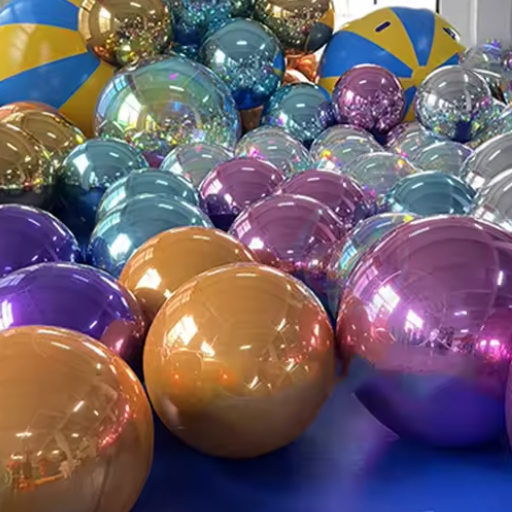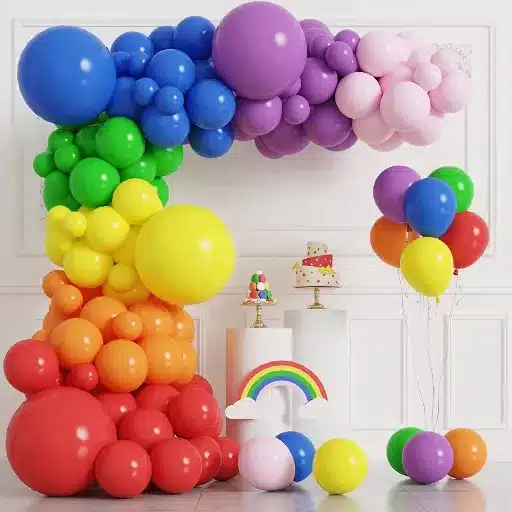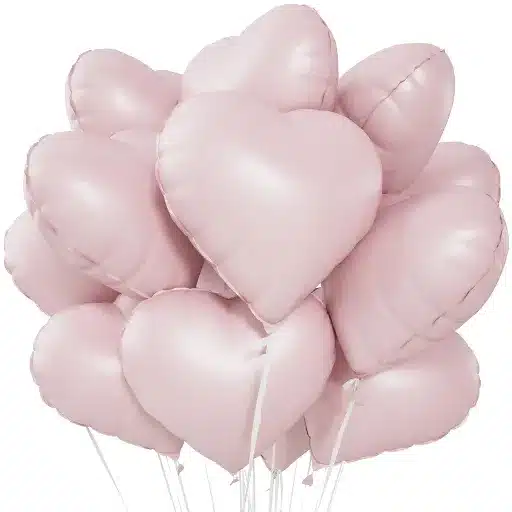Balloons are one of the oldest party elements that have never gone out of style. They bring vibrant color, whimsical charm, and a touch of magic to events ranging from intimate birthday celebrations to large corporate gatherings. However, one question frequently arises when planning events: “How long will my balloons last?”
The answer isn’t straightforward, as balloon longevity depends on several factors including the type of balloon, inflation method, and environmental conditions. This comprehensive guide explores balloon shelf life, preservation techniques, and environmentally conscious alternatives to help you make informed decisions for your celebrations.
Quick Answer
Latex balloons filled with helium: 8-12 hours
Foil balloons filled with helium: 3-5 days to several weeks
Air-filled balloons: Several days to weeks depending on material and conditions
Understanding Balloon Types and Materials
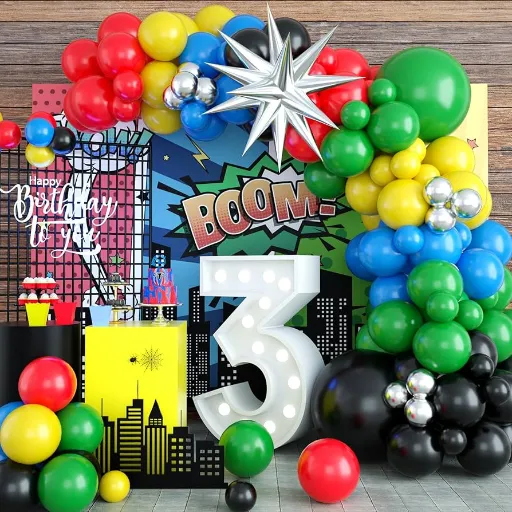
Latex Balloons: Natural and Biodegradable
Latex balloons are made from natural rubber latex, making them biodegradable and more environmentally friendly than synthetic alternatives. Their porous nature affects their longevity in several ways:
| Fill Type | Expected Lifespan | Optimal Conditions | Enhancement Options |
|---|---|---|---|
| Air-filled | 1 week or longer | Cool, indoor environment | Proper inflation, avoid sharp objects |
| Helium-filled | 8-12 hours | Cool, shaded area | Hi-Float treatment (extends to 2-5 days) |
| Treated with Hi-Float | 2-5 days | Indoor, temperature controlled | Proper sealing and storage |
Key Characteristics of Latex Balloons:
- Biodegradable material: Breaks down naturally when exposed to oxygen and UV radiation
- Cost-effective: Affordable option for large-scale decorations
- Versatile sizing: Available from small accent balloons to 36-inch statement pieces
- Porous structure: Allows helium to escape through microscopic pores
- Temperature sensitive: Expands in heat, contracts in cold
Foil Balloons: Durable and Long-Lasting
Foil balloons, also known as Mylar balloons, are crafted from thin nylon material coated with a metallic compound. Their non-porous structure provides significant advantages for longevity:
Foil Balloon Advantages
- Extended float time: 3-5 days under normal conditions, up to weeks in optimal environments
- Superior helium retention: Less porous material prevents helium escape
- Visual appeal: Metallic finish provides bright, reflective surfaces
- Custom shapes available: Numbers, letters, characters, and themed designs
Important Safety Considerations for Foil Balloons
- Electrical hazard: Keep away from power lines due to conductive metallic coating
- Non-biodegradable: Require proper disposal to minimize environmental impact
- Sharp object sensitivity: Can puncture and deflate quickly if damaged
Factors Affecting Balloon Lifespan
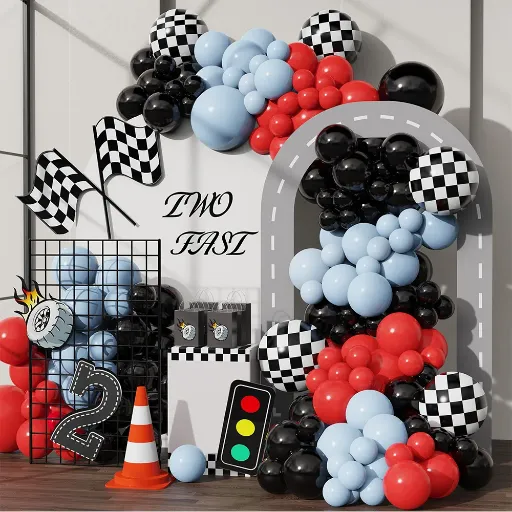
Environmental Conditions
Environmental factors play a crucial role in determining how long balloons will last, particularly for outdoor installations:
| Environmental Factor | Effect on Latex Balloons | Effect on Foil Balloons | Mitigation Strategies |
|---|---|---|---|
| Direct Sunlight/UV Rays | Severe degradation, 1-2 hours lifespan | Moderate impact, reduced float time | Keep in shaded areas, use UV-resistant treatments |
| High Temperature | Expansion and potential bursting | Increased helium escape rate | Maintain cool storage, avoid heat sources |
| Low Temperature | Contraction and loss of buoyancy | Helium condensation, reduced volume | Indoor storage during cold weather |
| Altitude Changes | Expansion due to lower atmospheric pressure | Similar expansion effects | Adjust inflation for altitude differences |
The Role of Helium in Balloon Deflation
Helium plays a crucial role in balloon longevity due to its unique properties:
- Molecular size: Helium atoms are small enough to pass through balloon materials
- Escape rate: Approximately 8% of helium escapes latex balloons every hour under standard conditions
- Temperature sensitivity: Warmer conditions accelerate helium escape, while cold contracts the gas
- Pressure effects: Changes in atmospheric pressure affect balloon volume and helium retention
Helium Loss Prevention
Hi-Float Treatment: Special coating applied to balloon interior that significantly slows helium escape, extending float time from hours to days.
Detailed Lifespan Expectations
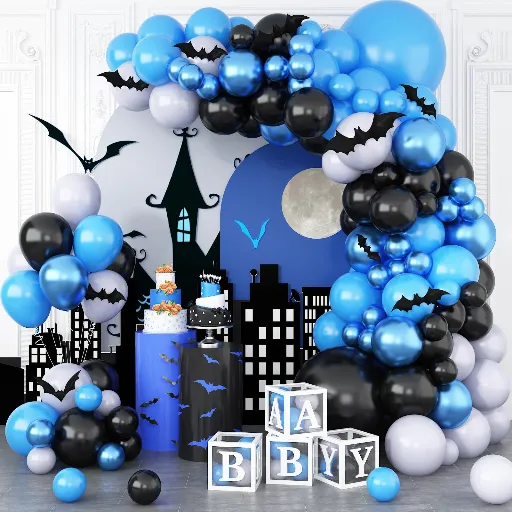
Latex Balloon Lifespan
The lifespan of latex balloons varies significantly based on usage and environmental conditions:
Indoor Conditions (Optimal)
- Air-filled: 12-24 hours to 1 week
- Helium-filled: 8-12 hours
- Hi-Float treated: 2-5 days
Outdoor Conditions (Challenging)
- Direct sunlight: 1-2 hours before degradation
- High temperatures: Risk of expansion and bursting
- Cold weather: Shrinkage and loss of buoyancy
Foil Balloon Lifespan
Foil balloons offer superior longevity due to their material properties:
| Conditions | Helium-Filled Duration | Air-Filled Duration | Special Considerations |
|---|---|---|---|
| Optimal Indoor | 7+ days | Weeks to months | Cool, dry environment away from sharp objects |
| Normal Indoor | 3-5 days | Several weeks | Room temperature, minimal handling |
| Outdoor | 1-3 days | 1-2 weeks | Weather dependent, UV exposure reduces lifespan |
Environmental Impact and Wildlife Concerns
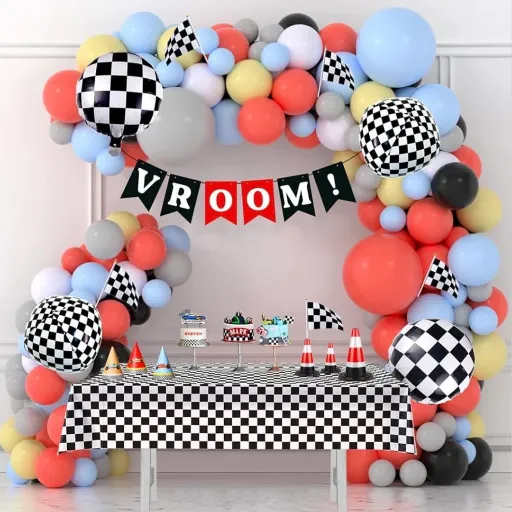
Critical Environmental Issues
Balloons pose significant threats to wildlife and natural ecosystems. Understanding these impacts is essential for responsible party planning.
Wildlife Threats
Released or improperly disposed balloons create serious hazards for wildlife:
- Marine life endangerment: Sea turtles mistake balloons for jellyfish, leading to digestive blockages
- Bird mortality: Studies show approximately 20% of seabirds that die from plastic ingestion are killed by balloons or balloon fragments
- Entanglement hazards: Balloon strings and ribbons can cause choking, suffocation, and mobility restrictions
- Ranking in marine debris: Balloons are classified as one of the top three most hazardous marine debris items
Decomposition Timeline
| Balloon Type | Decomposition Time | Environmental Impact | Disposal Recommendations |
|---|---|---|---|
| Latex (Biodegradable) | 6 months to several years | Moderate – depends on environmental conditions | Proper waste disposal, never release outdoors |
| Foil/Mylar | Does not biodegrade | High – permanent environmental presence | Recycling programs, specialized disposal |
| Helium Resource | Non-renewable resource | High – medical and scientific industry concerns | Consider air-filled alternatives |
Eco-Friendly Balloon Alternatives
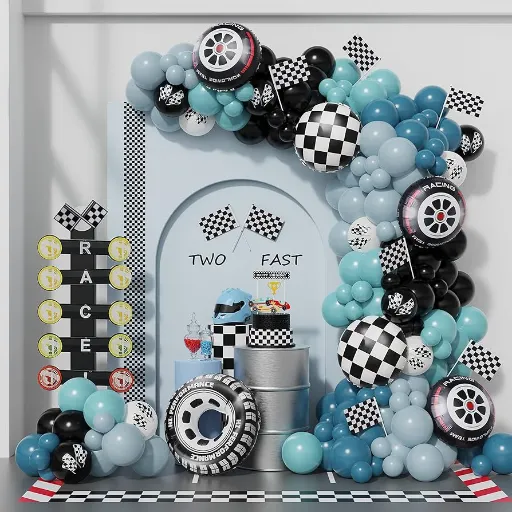
Sustainable Celebration Options
Transitioning to environmentally responsible decorations can maintain festive atmosphere while protecting wildlife and ecosystems.
Reusable Decorations
- Fabric banners and bunting
- Cloth garlands
- Multi-event customizable options
- Significant waste reduction compared to single-use items
Paper Decorations
- Origami and paper sculptures
- Paper pom-poms and streamers
- Biodegradable confetti
- Decomposition time: 2-6 weeks
Interactive Elements
- Bubble machines and wands
- Biodegradable soap solutions
- Entertainment for all ages
- No lasting environmental impact
Natural Decorations
- Potted plants and flower arrangements
- Pinwheels and wind spinners (sustainable materials)
- LED lights and solar lanterns
- Reusable and energy-efficient options
Best Practices for Balloon Longevity

Storage and Handling Tips
- Proper inflation: Avoid over-inflation to prevent stress on material
- Temperature control: Store in cool, dry environments (60-70°F optimal)
- Protection from elements: Keep away from direct sunlight, sharp objects, and extreme temperatures
- Hi-Float treatment: Apply to latex balloons for extended helium retention
- Secure sealing: Ensure proper knots and clips to prevent air/helium escape
Extending Balloon Life
Professional Tips
- Use balloon treatments: Hi-Float can extend latex balloon float time by 2-5 days
- Choose appropriate sizing: Larger balloons generally have longer float times
- Monitor environmental conditions: Move balloons indoors during extreme weather
- Handle minimally: Reduce touching and movement to prevent damage
Reference Sources
- Bargain Balloons: Shelf Life of Latex Balloons
This article explains the shelf life of latex balloons and how proper storage can extend their usability for years. It provides practical tips for preserving balloons.
Source - Shimmer and Confetti: Storing Un-Inflated Balloons
This blog discusses methods to store un-inflated balloons, including freezing, which can preserve them for over five years. It also highlights precautions to ensure longevity.
Source - Bargain Balloons: Shelf Life of Foil Balloons
This resource focuses on foil balloons, stating that they do not have a best-before date and can remain usable for decades if stored in dry conditions.
Source
Frequently Asked Questions
Do helium balloons have an expiration date?
Yes, helium balloons have limited lifespans primarily determined by balloon quality and storage conditions. While basic helium-inflated balloons last 12-24 hours, higher-quality balloons with treatments can maintain their shape for several days.
How long will party balloons last?
Latex party balloons, when properly inflated and stored, can last up to a week with air filling. They are most durable when kept in cool, dark places away from direct heat and sunlight.
How can I make balloons last longer?
To extend balloon life:
- Use Hi-Float treatment for helium balloons
- Store in cool, dark environments
- Avoid direct sunlight and heat sources
- Handle minimally to prevent damage
- Use proper inflation techniques
Can I store uninflated balloons long-term?
Yes, uninflated latex balloons can be stored for up to 2 years when kept in cool, dry conditions away from sunlight. Store in sealed containers to prevent aging and degradation.
What’s the difference between latex and foil balloon storage life?
Uninflated latex balloons can be stored for up to 2 years in proper conditions, while foil balloons have similar storage capabilities. However, once inflated, foil balloons significantly outlast latex balloons due to their non-porous material structure.
Are balloon releases ever environmentally safe?
No, balloon releases are never environmentally safe. Even “biodegradable” latex balloons can take months to years to decompose and pose immediate threats to wildlife. Responsible disposal is always required.
Conclusion: Making Informed Balloon Choices
Understanding balloon shelf life helps in planning successful events while making environmentally conscious decisions. While balloons can add festive appeal to celebrations, their environmental impact requires careful consideration.
Key Takeaways
- Plan timing carefully: Latex balloons provide 8-12 hours of float time, while foil balloons last 3-5 days
- Consider environmental conditions: Indoor, climate-controlled environments significantly extend balloon life
- Use life-extending treatments: Hi-Float and proper handling can multiply balloon longevity
- Explore eco-friendly alternatives: Reusable decorations and natural elements provide sustainable celebration options
- Dispose responsibly: Never release balloons outdoors; always use proper waste disposal methods
Whether you choose traditional balloons or eco-friendly alternatives, proper planning and responsible practices ensure memorable celebrations that respect both your event needs and environmental stewardship.

